当前位置:网站首页>2022-08-10:为了给刷题的同学一些奖励,力扣团队引入了一个弹簧游戏机, 游戏机由 N 个特殊弹簧排成一排,编号为 0 到 N-1, 初始有一个小球在编号
2022-08-10:为了给刷题的同学一些奖励,力扣团队引入了一个弹簧游戏机, 游戏机由 N 个特殊弹簧排成一排,编号为 0 到 N-1, 初始有一个小球在编号
2022-08-11 08:54:00 【福大大架构师每日一题】
2022-08-10:为了给刷题的同学一些奖励,力扣团队引入了一个弹簧游戏机,
游戏机由 N 个特殊弹簧排成一排,编号为 0 到 N-1,
初始有一个小球在编号 0 的弹簧处。若小球在编号为 i 的弹簧处,
通过按动弹簧,可以选择把小球向右弹射 jumpi 的距离,或者向左弹射到任意左侧弹簧的位置,
也就是说,在编号为 i 弹簧处按动弹簧,
小球可以弹向 0 到 i-1 中任意弹簧或者 i+jumpi 的弹簧(若 i+jumpi>=N ,则表示小球弹出了机器),
小球位于编号 0 处的弹簧时不能再向左弹。
为了获得奖励,你需要将小球弹出机器。
请求出最少需要按动多少次弹簧,可以将小球从编号 0 弹簧弹出整个机器,即向右越过编号 N-1 的弹簧。
答案2022-08-10:
宽度优先遍历。Index Tree。
时间复杂度:O(N*logN)。
代码用rust编写。代码如下:
fn main() {
let mut jump1: Vec<i32> = vec![2, 5, 1, 1, 1, 1];
let mut jump2 = jump1.clone();
let ans1 = min_jump(&mut jump1);
let ans2 = min_jump2(&mut jump2);
println!("ans1 = {}", ans1);
println!("ans2 = {}", ans2);
}
// 宽度优先遍历
// N*logN
fn min_jump(jump: &mut Vec<i32>) -> i32 {
let n = jump.len() as i32;
let mut queue: Vec<i32> = vec![];
for _ in 0..n {
queue.push(0);
}
let mut l: i32 = 0;
let mut r: i32 = 0;
queue[r as usize] = 0;
r += 1;
let mut it = IndexTree::new(n);
// 1...n初始化的时候 每个位置填上1
for i in 1..n {
it.add(i, 1);
}
let mut step: i32 = 0;
while l != r {
// 队列里面还有东西
// tmp记录了当前层的终止位置!
let tmp = r;
// 当前层的所有节点,都去遍历!
while l < tmp {
let cur = queue[l as usize];
let forward = cur + jump[cur as usize];
if forward >= n {
return step + 1;
}
if it.value(forward) != 0 {
queue[r as usize] = forward;
r += 1;
it.add(forward, -1);
}
// cur
// 1....cur-1 cur
while it.sum(cur - 1) != 0 {
let find0 = find(&mut it, cur - 1);
it.add(find0, -1);
queue[r as usize] = find0;
r += 1;
}
l += 1;
}
step += 1;
}
return -1;
}
fn find(it: &mut IndexTree, mut right: i32) -> i32 {
let mut left = 0;
let mut mid;
let mut find0 = 0;
while left <= right {
mid = (left + right) / 2;
if it.sum(mid) > 0 {
find0 = mid;
right = mid - 1;
} else {
left = mid + 1;
}
}
return find0;
}
pub struct IndexTree {
tree: Vec<i32>,
n: i32,
}
impl IndexTree {
pub fn new(size: i32) -> Self {
let mut tree: Vec<i32> = vec![];
for _ in 0..size + 1 {
tree.push(0);
}
Self { tree, n: size }
}
pub fn value(&mut self, index: i32) -> i32 {
if index == 0 {
return self.sum(0);
} else {
return self.sum(index) - self.sum(index - 1);
}
}
pub fn sum(&mut self, i: i32) -> i32 {
let mut index = i + 1;
let mut ret = 0;
while index > 0 {
ret += self.tree[index as usize];
index -= index & -index;
}
return ret;
}
pub fn add(&mut self, i: i32, d: i32) {
let mut index = i + 1;
while index <= self.n {
self.tree[index as usize] += d;
index += index & -index;
}
}
}
// 感谢黄汀同学
// 弄出了时间复杂度O(N)的过程
// 和大厂刷题班,第10节,jump game类似
fn min_jump2(jump: &mut Vec<i32>) -> i32 {
let nn = jump.len() as i32;
let mut ans = nn;
let mut next = jump[0];
if next >= nn {
return 1;
}
if next + jump[next as usize] >= nn {
return 2;
}
// dp[i] : 来到i位置,最少跳几步?
let mut dp: Vec<i32> = vec![];
for _ in 0..nn + 1 {
dp.push(nn);
}
// dis[i] : <= i步的情况下,最远能跳到哪?
let mut dis: Vec<i32> = vec![];
for _ in 0..nn {
dis.push(0);
}
// 如果从0开始向前跳,<=1步的情况下,最远当然能到next
dis[1] = next;
// 如果从0开始向前跳,<=2步的情况下,最远可能比next + jump[next]要远,
// 这里先设置,以后可能更新
dis[2] = next + jump[next as usize];
dp[(next + jump[next as usize]) as usize] = 2;
let mut step = 1;
for i in 1..nn {
if i > dis[step as usize] {
step += 1;
}
dp[i as usize] = get_min(dp[i as usize], step + 1);
next = i + jump[i as usize];
if next >= nn {
ans = get_min(ans, dp[i as usize] + 1);
} else if dp[next as usize] > dp[i as usize] + 1 {
dp[next as usize] = dp[i as usize] + 1;
dis[dp[next as usize] as usize] = get_max(dis[dp[next as usize] as usize], next);
}
}
return ans;
}
fn get_max<T: Clone + Copy + std::cmp::PartialOrd>(a: T, b: T) -> T {
if a > b {
a
} else {
b
}
}
fn get_min<T: Clone + Copy + std::cmp::PartialOrd>(a: T, b: T) -> T {
if a < b {
a
} else {
b
}
}执行结果如下:
边栏推荐
- Getting Started with Kotlin Algorithms Calculating Prime Factors
- 向日葵安装教程--向日葵远程桌面控制
- 基于 VIVADO 的 AM 调制解调(2)工程实现
- Filesystem Hierarchy Standard
- magical_spider远程采集方案
- Contrastive Learning Series (3)-----SimCLR
- 2022-08-09 顾宇佳 学习笔记
- Detailed Explanation of the Level 5 Test Center of the Chinese Institute of Electronics (1)-string type string
- WiFi cfg80211
- 如何在移动钱包中搭建一个小程序应用商店
猜你喜欢
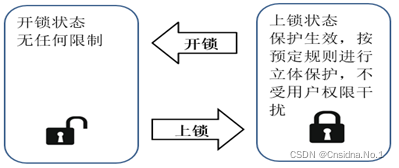
企业服务器主机加固现状分析
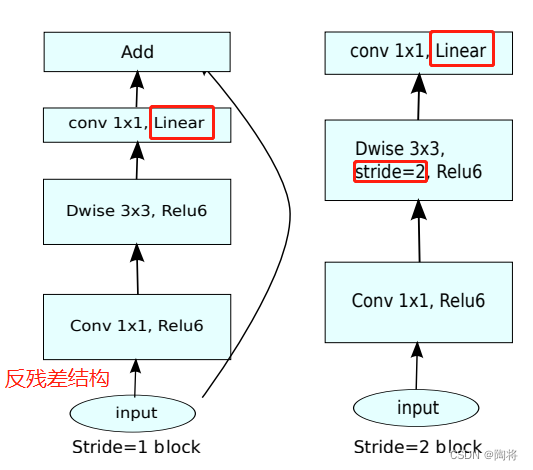
轻量级网络(一):MobileNet V1,V2, V3系列
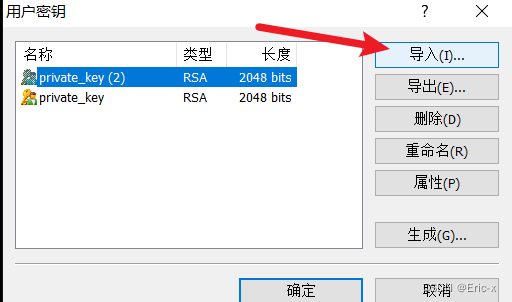
通过Xshell连接Vagrant创建的虚拟机
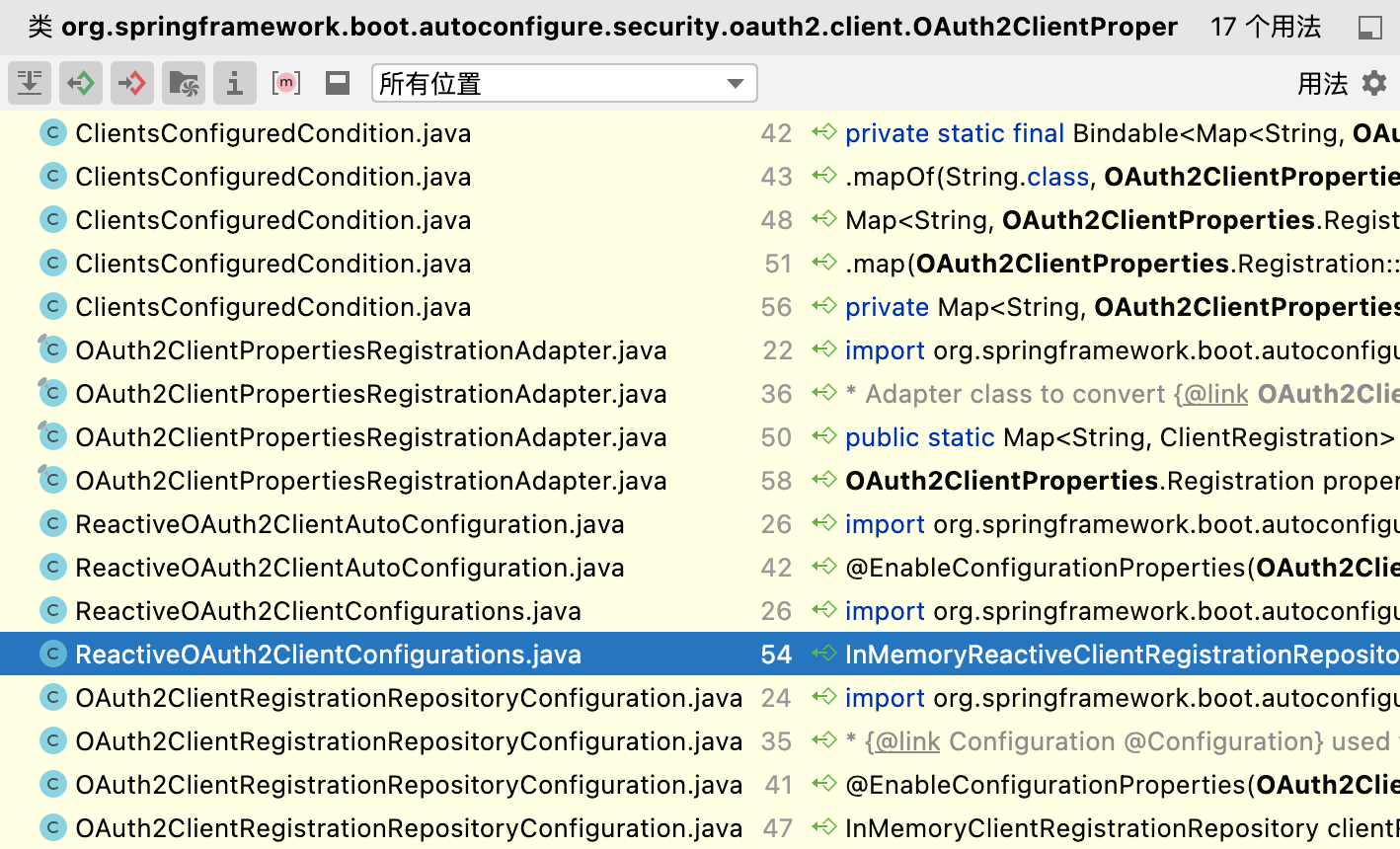
OAuth Client默认配置加载
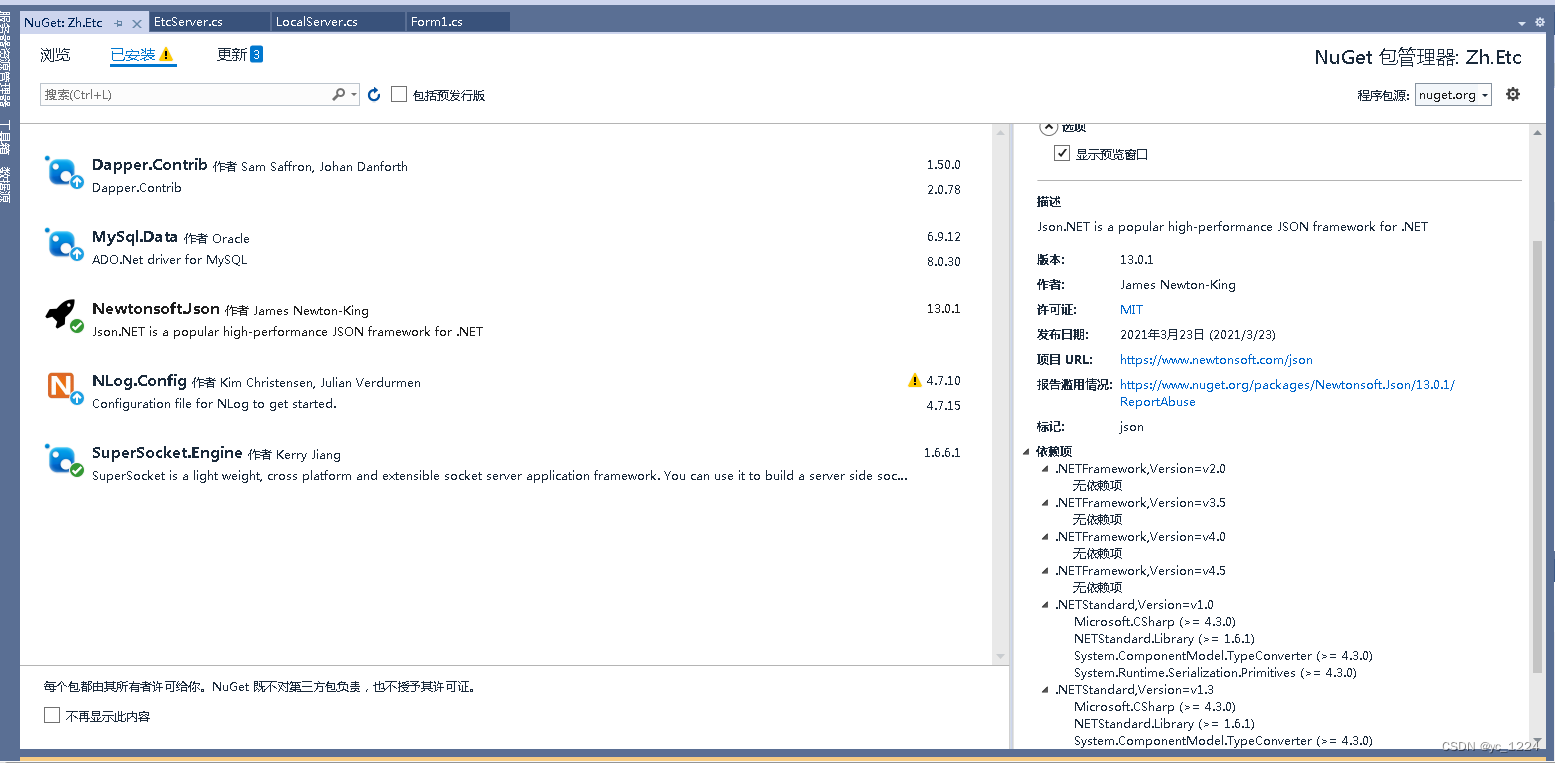
Nuget can't find the package problem
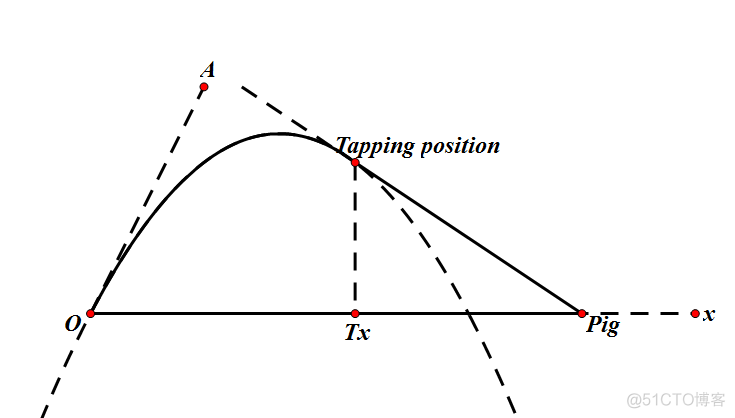
SDUT 2877:angry_birds_again_and_again

持续集成/持续部署(2)Jenkins & SonarQube

shell之sed
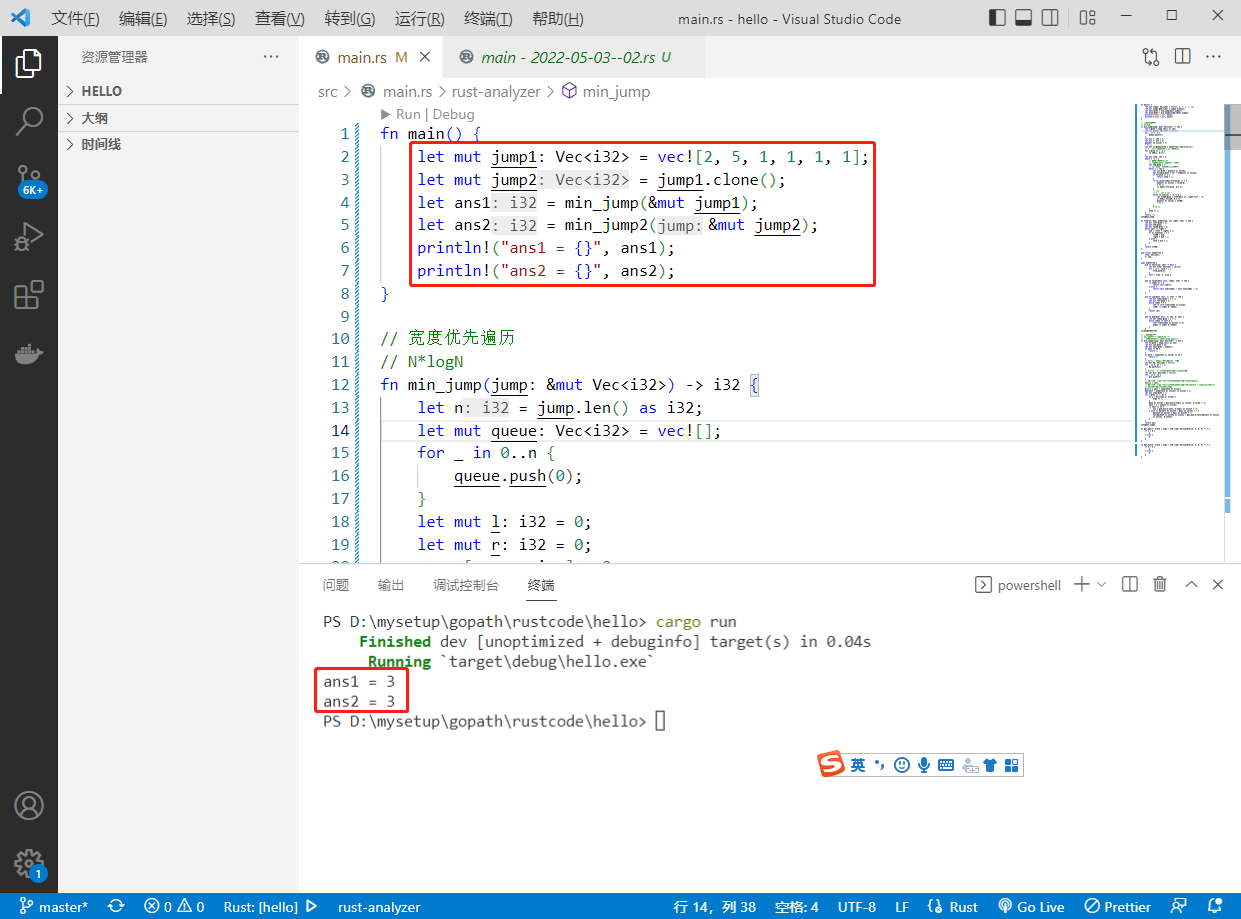
2022-08-10:为了给刷题的同学一些奖励,力扣团队引入了一个弹簧游戏机, 游戏机由 N 个特殊弹簧排成一排,编号为 0 到 N-1, 初始有一个小球在编号 0 的弹簧处。若小球在编号为 i 的弹
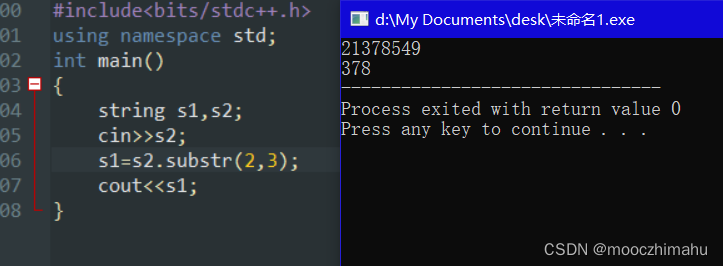
Detailed Explanation of the Level 5 Test Center of the Chinese Institute of Electronics (1)-string type string
随机推荐
Birth of the Go language
小程序组件不能修改ui组件样式
当你领导问你“还有其他的么”
ASP.NET Core 6框架揭秘实例演示[32]:错误页面的集中呈现方式
仙人掌之歌——大规模高速扩张(1)
在软件工程领域,搞科研的这十年!
IPQ4019/IPQ4029 support WiFi6 MiniPCIe Module 2T2R 2×2.4GHz 2x5GHz MT7915 MT7975
tensorflow 基础操作1(tensor 基本属性 , 维度变换,数学运算)
利用mindspore下面mindzoo里面的yolov3-darknet53进行目标识别,模型训练不收敛
MySql的索引
表达式必须具有与对应表达式相同的数据类型
Kotlin算法入门求回文数数算法优化二数字生成规则
游戏服务器中集群网关的设计
四级独创的阅读词汇表
RestTemplate工具类
万字长文带你了解多态的底层原理,这一篇就够了
分门别类输入输出,Go lang1.18入门精炼教程,由白丁入鸿儒,go lang基本数据类型和输入输出EP03
WiFi cfg80211
新一代开源免费的轻量级 SSH 终端,非常炫酷好用!
盘点四个入门级SSL证书